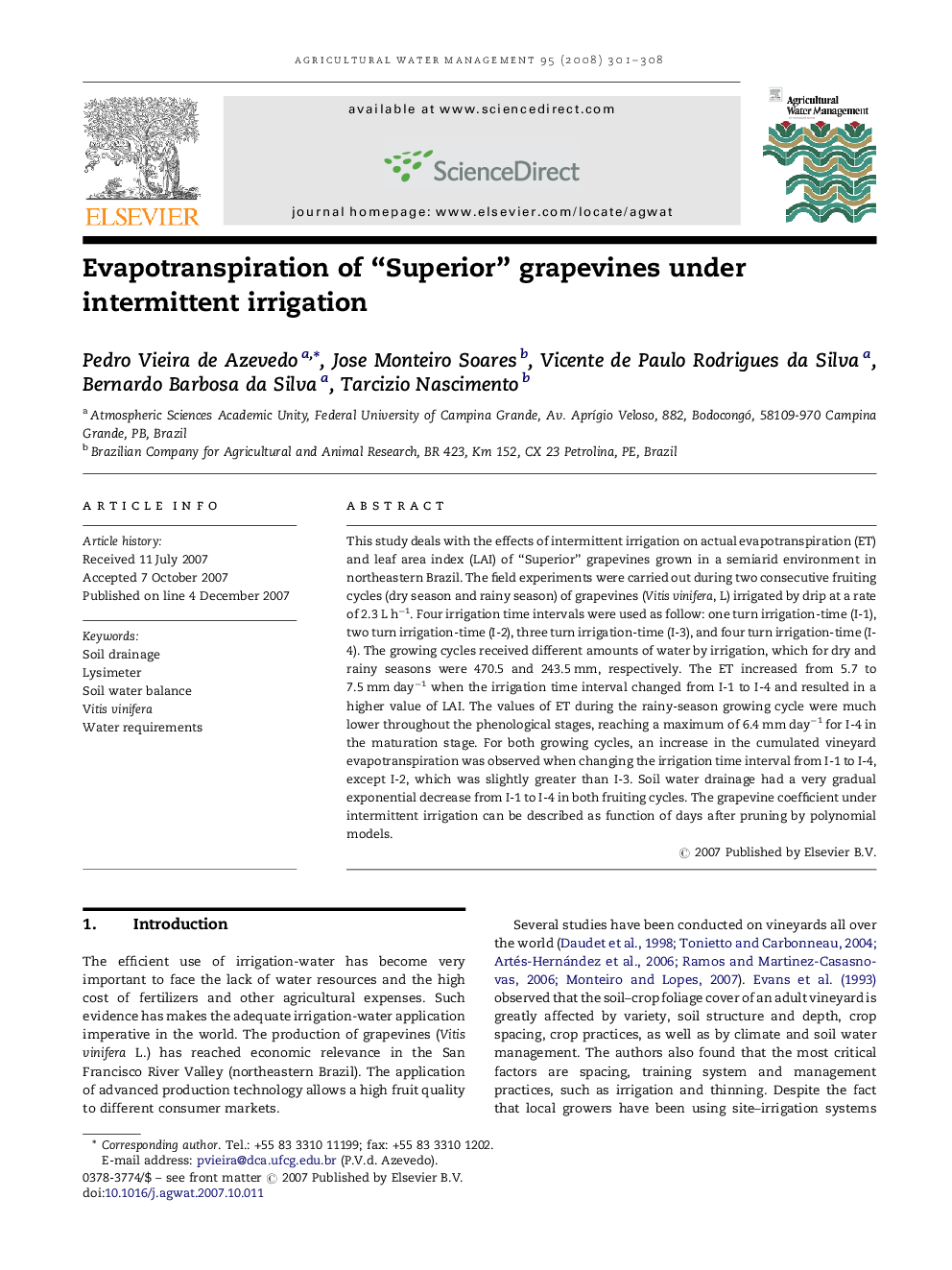| Article ID | Journal | Published Year | Pages | File Type |
|---|---|---|---|---|
| 4480278 | Agricultural Water Management | 2008 | 8 Pages |
This study deals with the effects of intermittent irrigation on actual evapotranspiration (ET) and leaf area index (LAI) of “Superior” grapevines grown in a semiarid environment in northeastern Brazil. The field experiments were carried out during two consecutive fruiting cycles (dry season and rainy season) of grapevines (Vitis vinifera, L) irrigated by drip at a rate of 2.3 L h−1. Four irrigation time intervals were used as follow: one turn irrigation-time (I-1), two turn irrigation-time (I-2), three turn irrigation-time (I-3), and four turn irrigation-time (I-4). The growing cycles received different amounts of water by irrigation, which for dry and rainy seasons were 470.5 and 243.5 mm, respectively. The ET increased from 5.7 to 7.5 mm day−1 when the irrigation time interval changed from I-1 to I-4 and resulted in a higher value of LAI. The values of ET during the rainy-season growing cycle were much lower throughout the phenological stages, reaching a maximum of 6.4 mm day−1 for I-4 in the maturation stage. For both growing cycles, an increase in the cumulated vineyard evapotranspiration was observed when changing the irrigation time interval from I-1 to I-4, except I-2, which was slightly greater than I-3. Soil water drainage had a very gradual exponential decrease from I-1 to I-4 in both fruiting cycles. The grapevine coefficient under intermittent irrigation can be described as function of days after pruning by polynomial models.
